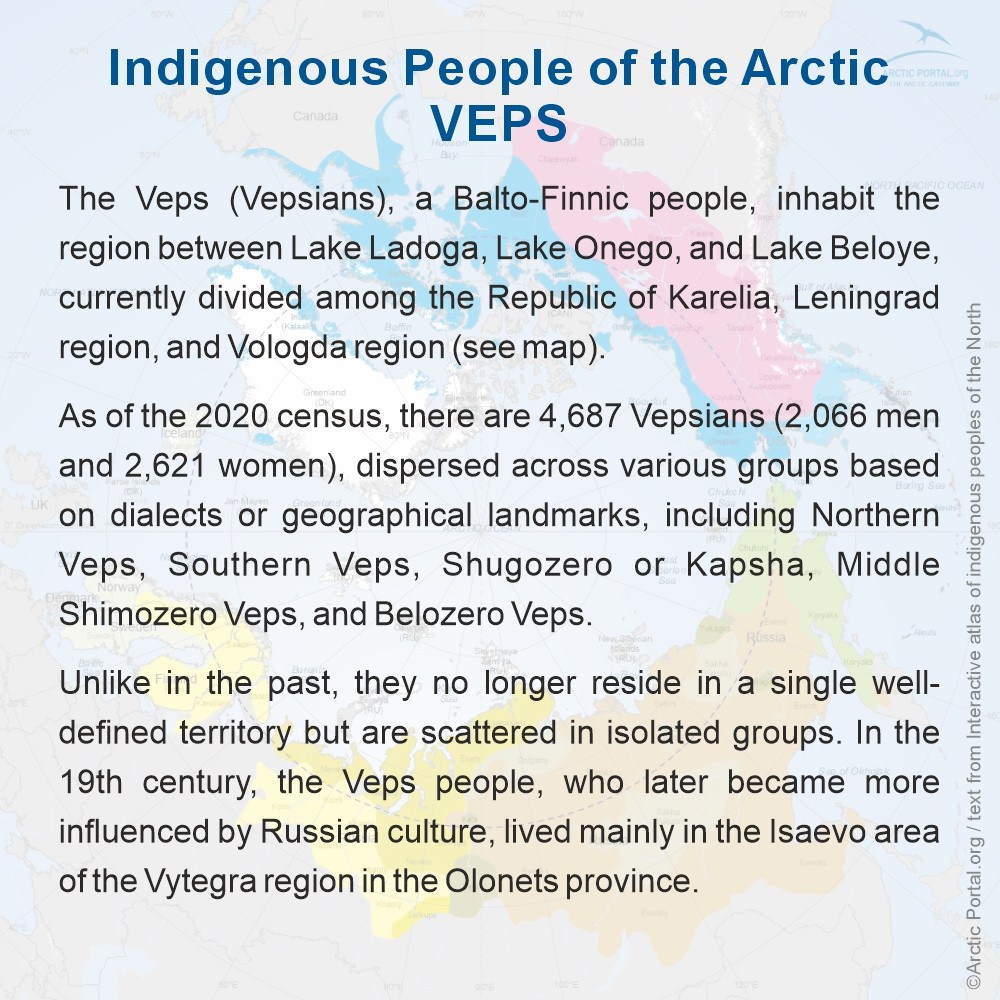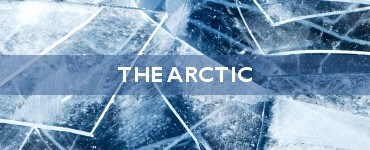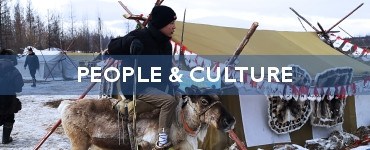The Veps (Vepsians), a Balto-Finnic people, inhabit the region between Lake Ladoga, Lake Onego, and Lake Beloye, currently divided among the Republic of Karelia, Leningrad region, and Vologda region.
As of the 2020 census, there are 4,687 Vepsians (2,066 men and 2,621 women), dispersed across various groups based on dialects or geographical landmarks, including Northern Veps, Southern Veps, Shugozero or Kapsha, Middle Shimozero Veps, and Belozero Veps.
Unlike in the past, they no longer reside in a single well-defined territory but are scattered in isolated groups. In the 19th century, the Veps people, who later became more influenced by Russian culture, lived mainly in the Isaevo area of the Vytegra region in the Olonets province.
Veps Language
The Veps langage belongs to the Finnic branch of the Uralic languages, alongside Finnish, Karelian and Izhorian. The language has earned the nickname "the Sanskrit of the Finnic languages" due to its archaic nature. For example, it lacks consonant gradation, resulting in a very rule-based language.
Despite being classified as endangered, efforts are being made to preserve and promote the Veps language. Initiatives have been undertaken to teach it in schools and community centers, trying to keep the language alive.
Almost all Veps are fluent in Russian and people of the younger generation often do not speak Veps but have an understanding of the language.
Before 1917, the Veps were officially termed chuds by the Russians (meaning strange & hostile people) while the ethnonym "Veps" came into use in the 1920s.
Veps Culture
The ethnic flag of the Veps was designed by Vitaly Dobrynin and has been in use since 1992. It bears the design of the Nordic or Scandinavian cross.
The traditional costume of the Veps people is truly captivating. These stunning garments feature vibrant colors, intricate embroidery, and traditional patterns. They are proudly worn on special occasions, festivals, and cultural occasions reflecting the rich heritage and beauty of Veps culture.
Spiritual Culture of the Veps
Veps mythology, shaped by poetic thinking, reflects beliefs about the world and human existance, enduring through contemporary folk culture. It centers around nature, spirits, and harmonious living. With influences from Finno-Ugric, Balto-Finnic, and Veps layer, as well as Indo-European and Russian peasant worldview, it includes concepts like the soul, water spirits, and fire worship. The main deity, Jumal, governs weather, while lower Veps mythology features spirits in different spaces.
Family rites, influenced by Orthodox Christianity, include baptisms, weddings, and funerals, with dirges used for communicating with the dead. Unique Veps customs encompass nighttime marriage proposals and distinct funeral traditions.
Visit our Map Gallery Arctic Portal specializes in creating customized graphical maps that cover a range of significant Arctic topics with global recognition. We are continuously working on new maps and adding them to our Gallery.












